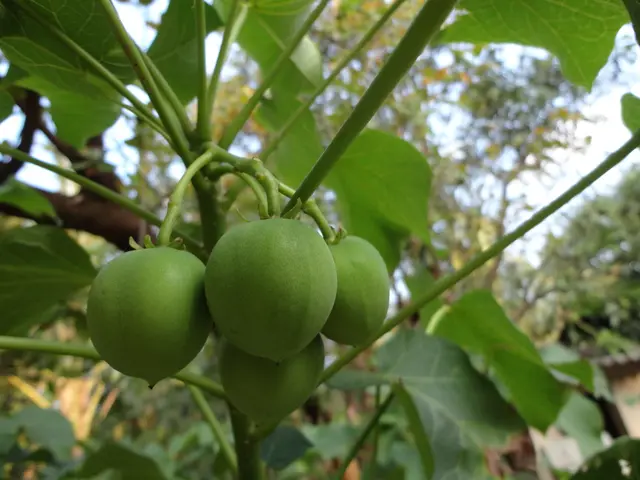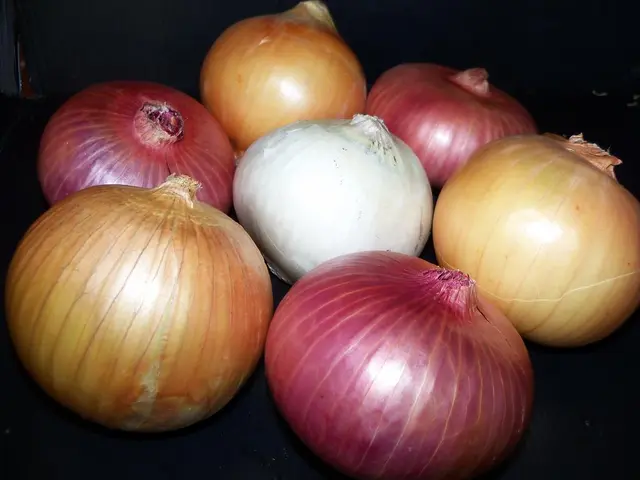Mastering Terrarium Hydration: An Expert's Handbook
Give your terrarium the right H_{2}O treatment!
Ain't watering a terrarium all about putting some good old H2O into it? Not exactly! Maintaining the perfect balance of water in your terrarium can be tricky, as too much or too little can each lead to negative results.
Terrarium ecosystems dance on the edge of chaos - overwater and rot and mold become your new roommates, while underwater and watch your plants shrivel up faster than a raisin in the sun.
See, there's nothing simple about taking care of a terrarium. But we've got you covered with the lowdown on the right way to water your terrarium. So let's dive in!
Pizza Time? When to Water Your Terrarium
Getting a handle on exactly when it's time to water your terrarium is half the battle. We've all heard of people letting their terrariums go for months without a drop, while others seem to be constantly adding more H2O. But hold on a second, adding "just a little more" might lead you straight to a swamp-like situation!
Luckily, there are plenty of signals to watch out for. Dive into these tips, and you'll know when it's time to break out the watering can!
Dry Dirt
Most terrariums call for tropical plants that need lots of moisture to thrive. A substrate with high water retention and decent drainage is key for a welcoming environment. So, generally speaking, your substrate should never be dry.
Feel free to dive in and check the dirt with your hands, or (if you want to keep your hands clean), assess the condensation levels against the glass through the substrate level. A well-moisturized substrate will show beads of condensation all the way through.
No Visible Condensation
It's not just about checking the substrate that matters. A closed terrarium ecosystem with an efficient water cycle should exhibit some condensation throughout the container. Usually, this happens during the morning and midday sun, when temperatures are sky-high.
Here, you'll see some misting up of the glass. If you can see condensation through the substrate layer, then there's some moisture down there. But if there's no condensation throughout the top of the terrarium, that's a strong indication that there's little to no humidity and likely, insufficient water in the system as a whole.
Dehydrated Plants
Next, take a peek at your plants to see if you've got yourself a case of dryness. Hopefully, you'll catch any dry spell problems before they affect your plants, but if your leaves are looking crispy, faded, or limp, it's time to add some moisture pronto. Dry leaves are telltale signs that your plants aren't getting enough water.
Now here's the trick: every plant is different, and careful attention to their specific requirements is essential for striking the perfect watering balance. For example, Fittonia plants are delicate flowers that wilt at the first hint of dryness. So be careful not to overwater your entire terrarium while trying to please one particular plant.
Frequency of Watering a Terrarium
There's no one-size-fits-all watering schedule for terrariums. It's all about striking a delicate balance between 'little and often' and 'few and far between.'
On the one hand, watering sparingly ensures you're not overwatering your plants or saturating your substrate; but by constantly opening up the closed terrarium to add water, you're never letting it settle into a healthy water cycle.
The frequency of watering your terrarium depends on the size, materials, plants, and conditions of your environment. As a rough guideline, a typical closed terrarium will likely need water replenishment every couple of months. If you ventilate your terrarium often, you may need to add water more frequently.
Hydrating Your Terrarium
Watering a terrarium is like giving it a good, old-fashioned game of Rock, Paper, Scissors. It's deceptively simple, involves a high degree of guesswork, and it's easy to get it wrong. But we're all about taking a measured approach to watering.
Mister Magic
Using a water bottle with a spray function is always recommended (or a mister or atomizer if that's your jam). Avoid pouring water directly from a bottle or tap, as you risk flooding areas while neglecting others, resulting in an uneven distribution of H2O.
If you prefer, use a fancy mister (but know they tend to spray less water than expected), or opt for a high-quality spray bottle with an adjustable nozzle.
Terrarium Spray Bottle (16oz) | Amber Glass
Compact, versatile (and very pretty) terrarium mister.
Available on our platform Store.
Just the Right Amount
Determining when to stop adding water can be a struggle. Watering your plants can feel like providing them with love, and who doesn't love showering their plants with affection? In any case, the goal is to evenly saturate the substrate, leaving no area soggy and no standing water on top or below the substrate layer.
If your terrarium has a false bottom layer, it's fine if a tiny bit of water seeps through to the pebble (preferably LECA) base. It helps maintain the humidity, and as long as the water doesn't reach the substrate, it won't wick up and risk harming the roots.
To achieve the perfect saturation, it's best to add a moderate amount of water at a time and let it permeate. Adding too much water all at once can lead to overwatering and make it difficult to correct your mistake.
The Best Water for a Terrarium
Tap water isn't ideal for terrariums. While chlorine probably won't hurt your plants, the salts in tap water can leave white streaks on your container over time. Thankfully, there are some suitable water types available to purchase:
- Reverse osmosis water: This is extremely pure but also expensive.
- Distilled water: Very pure, but more temperately priced than reverse osmosis.
- Deionized water: Water with salts removed. It tends to be sold for use in car batteries and is less expensive than distilled water.
Wrapping Up
Watering your plants? How do you do it? Adjusting your terrarium to strike the perfect balance can be a challenge. Check out our terrarium care guide for further assistance. Happy planting!
- Maintaining a home-and-garden lifestyle includes more than just watering a terrarium; understanding the right water balance is crucial to prevent rot, mold, or plant shriveling.
- Besides checking dry dirt, visible condensation, and dehydrated plants, paying attention to the water type used can help keep your terrarium healthy and thriving. For instance, distilled or deionized water can be better choices than tap water for a terrarium.








